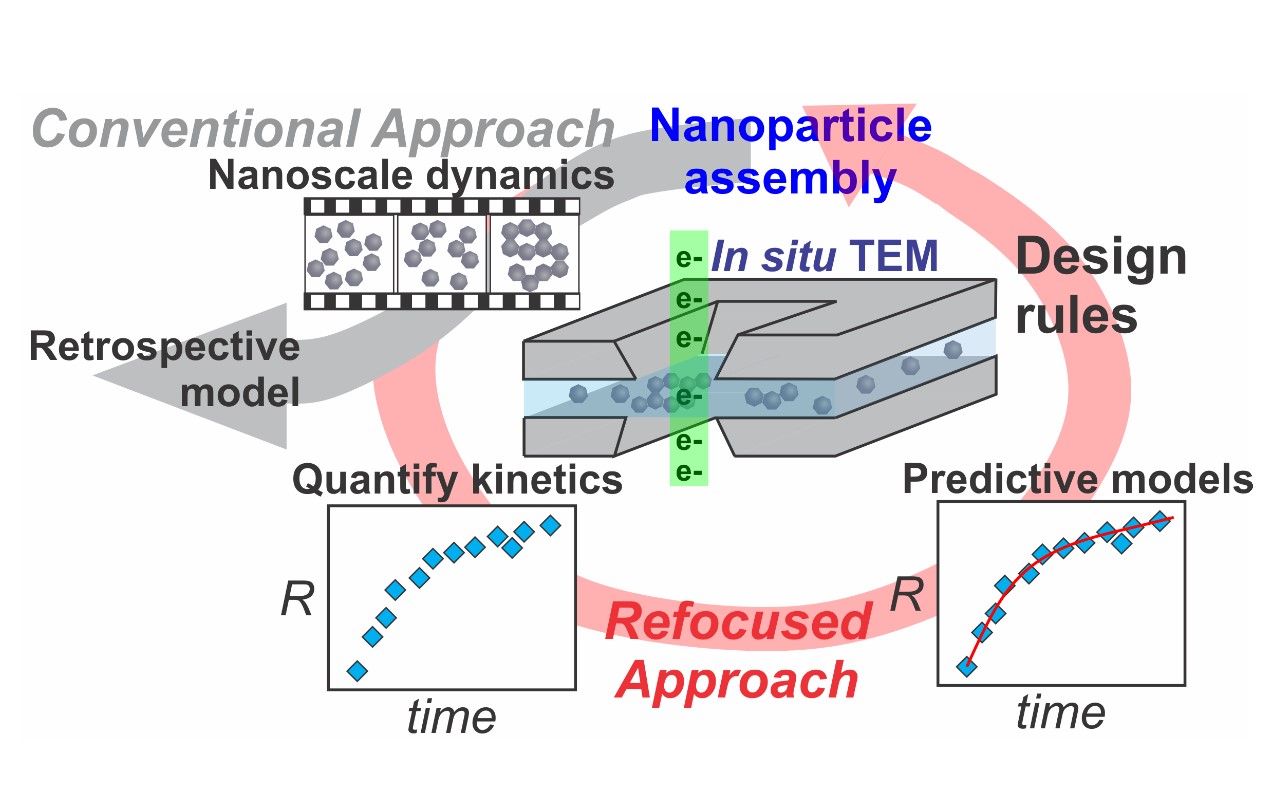Refocusing In-situ Electron Microscopy
In-situ transmission electron microscopy (in-situ TEM) in an emerging technique that enables researchers to watch processes in real time at the atomic and nanometer scales. This technique has enabled scientists to directly observe intercalation of lithium ion battery electrodes, nucleation of solid nanocrystals, biomolecular dynamics of viruses and proteins, and self-assembly of polymers and nanomaterials, to name a few. Such observations could potentially provide fundamental insight, bolstering battery technology, catalysis and more effective vaccines. Making effective use of these detailed nanoscale observations remains a challenge to those in the in-situ TEM field. Most researchers in the field focus on finding novel phenomena, or confirming classical models and theories of material and molecule behavior. In a perspective published in ACS Nano, Taylor Woehl, an assistant professor of chemical and biomolecular engineering (ChBE) at the University of Maryland (UMD), argues that current strategies for in-situ TEM experiments should be refocused to place increased emphasis on translating the data into useful information that will improve materials design. “There are many technical challenges that currently impede using in-situ TEM data to improve materials synthesis and design,” Woehl said. “These include the interaction of the TEM beam with material, which can alter the material structure and chemistry. Additionally, the kinetics of nanoscale processes during in-situ TEM may differ compared to macroscopic materials systems. If researchers are aware of these limitations and take steps to mitigate them, then meaningful in-situ TEM experiments can be performed.” One example highlighting this refocused strategy is the self-assembly of nanoparticles into macroscopic ordered materials called nanoparticle superlattices – these materials have optical and electrical properties that could make them excellent sensors and detectors. However, the mechanisms by which the nanoparticles self-assemble are poorly understood. The current methods used to form these materials also introduce a number of defects, which degrades their properties and limits sensing and detecting applications. In-situ TEM can be utilized to watch how the nanoparticles arrange over time and form defects – critical information that will enable finding optimal synthesis conditions for making defect free materials. “I believe in-situ TEM has a bright future in the materials science and nanomaterials fields, as long as we can shift our focus from just watching nanoscale dynamics to using this information to help other researchers improve the performance of their materials,” said Woehl. “To do this, we need to address some technical challenges associated with the technique and we need to carefully choose the materials systems we experiment on.” For additional information: Woehl, T. (18 Nov 2019). “Refocusing in Situ Electron Microscopy: Moving beyond Visualization of Nanoparticle Self-Assembly To Gain Practical Insights into Advanced Material Fabrication,” ACS Nano. DOI: 10.1021/acsnano.9b08281
Related Articles: November 20, 2019 Prev Next |


